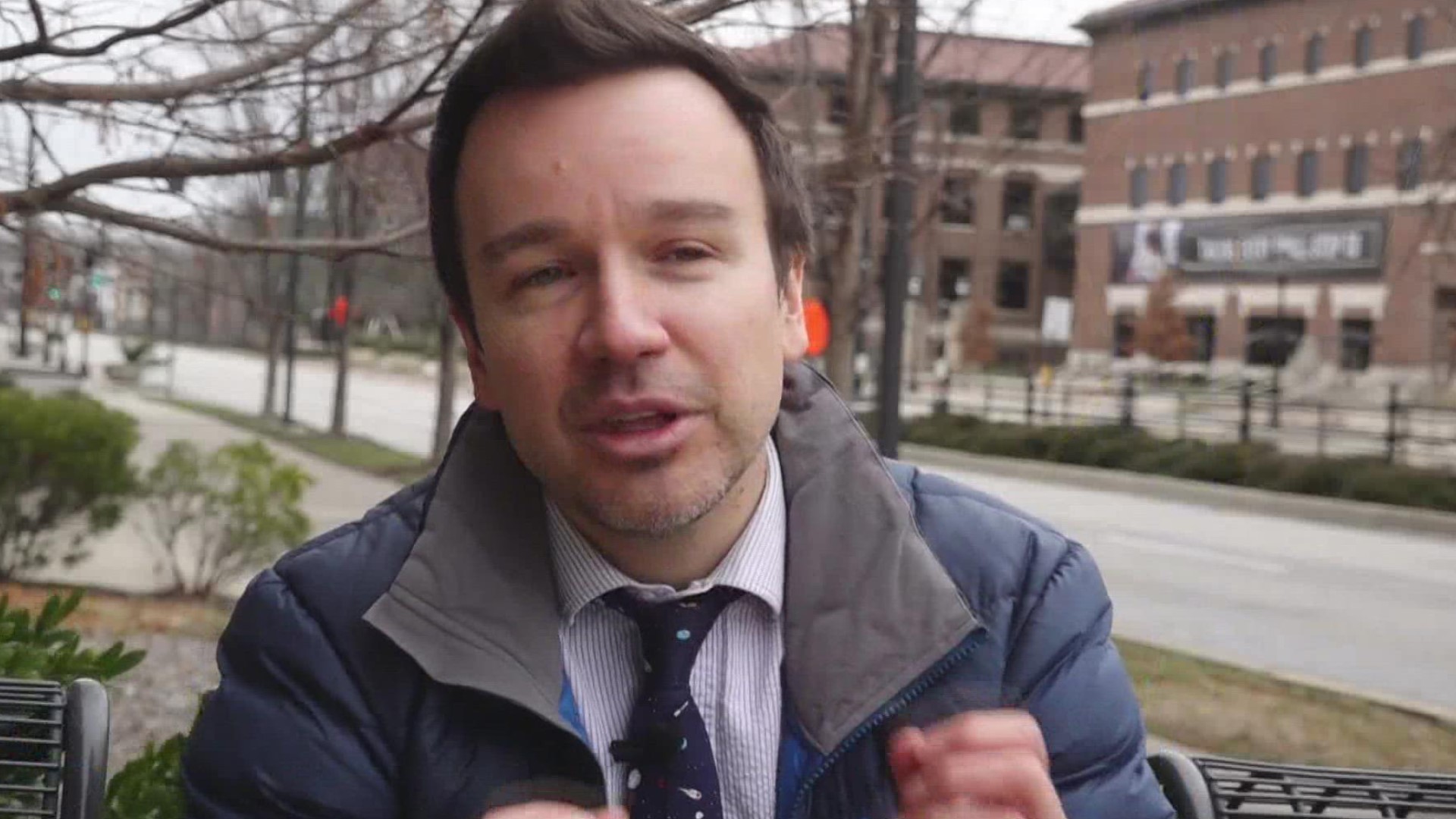WEST LAFAYETTE, Ind. — On Christmas Day, the largest telescope in history will blast off into space, and a bit of Purdue University will go along with it.
This time it is Purdue professor Danny Milisavljevic getting a chance among the stars.
"My contribution comes after the launch. We have this amazing telescope with revolutionary technology. What do we do with it? Where do we point? We have the universe before us. Where first do we want to look into the great unknown?" Milisavljevic said.
He is one of several hundred global collaborators - a handful from Purdue - who are counting on the James Webb Telescope to yield great insight about the cosmos beyond.
The Hubble Space Telescope’s successor is a time-traveling wonder, capable of peering back to within a hair’s breadth of the dawn of the universe.
It will be the biggest and most powerful astronomical observatory ever to leave the planet, elaborate in its design and ambitious in its scope. At a budget-busting $10 billion, it is the most expensive - and the trickiest, by far - to pull off.
Set to soar after years of delay, the Telescope will seek out the faint, twinkling light from the first stars and galaxies, providing a glimpse into cosmic creation.
Its infrared eyes will also stare down black holes and hunt for alien worlds, scouring the atmospheres of planets for water and other possible hints of life.
The Webb Telescope is so big, it had to be folded origami-style to fit into the nose cone of the European Ariane rocket.
Its light-collecting mirror is the size of several parking spots and its sunshade the size of a tennis court. Everything needs to be unfolded once the spacecraft is speeding toward its perch 1 million miles (1.6 million kilometers) away.
The 31-year-old Hubble - increasingly creaky but still churning out celestial glamour shots - focuses on visible and ultraviolet light, with just a smattering of infrared light.
As an infrared (or heat-sensing) telescope, Webb will see things Hubble can’t, providing “an entirely new perspective on the universe that will be just as awe-inspiring," said Nikole Lewis, deputy director of Cornell University’s Carl Sagan Institute.
Webb will attempt to look back in time 13.7 billion years, a mere 100 million years after the universe-forming Big Bang as the original stars were taking shape. Scientists are eager to see how closely, if at all, these initial galaxies resemble our modern-day Milky Way.
NASA administrator Bill Nelson said he's more nervous now than when he launched on space shuttle Columbia in 1986.
RELATED: 'The whole thing has got to work perfectly': The risks of the James Webb Space Telescope launch
“There are over 300 things, any one of which goes wrong, it is not a good day," Nelson told the Associated Press. "So the whole thing has got to work perfectly.”
If it does go perfectly, Milisalvevich will be the among the first to view get a glimpse of the images. His studies center on Cassiopeia A, remnants of a supernova 11,000 light years away.
It's residual star stuff which is found in the air we breathe and the carbon in our bones.
"Carl Sagan said we are a way for the universe to know itself, right? So if we weren't here, it wouldn't have a consciousness connected to it. So I find it grandiose in scope to think that we are a way for the universe to investigate itself," he said.
The technology for the mission is advanced and brings along the euphoria of Apollo or Gemini before it.
"There are hundreds of different mechanisms that need to work successfully to come out right, so there is a bit of risk in that. But one can say 'no guts, no glory'. A great achievement requires often great risk," he said.
But if those journeys of yesteryear tried to answer how far we could go, it is this one gently inquiring where we came from.
"There's always those unknown unknows, things we don't anticipate, the pleasant or unexpected surprises, and I guarantee you that those kinds of discoveries will be made by the James Webb Space Telescope."
NASA said Tuesday the launch window for Saturday is between 7:20 and 7:52 a.m. EST.
You can tune into Purdue's launch party here.
What other people are reading:
- Where is Santa Claus right now? NORAD begins big Christmas Eve mission
- Christmas 2021: Which stores will be open, closed
- NICU babies sport Christmas sweaters at Community Hospital North
- Last-minute Christmas gifts that won't break the bank
- Here's where you can recycle your live Christmas tree for free in Indianapolis
- Indiana lawmaker wants to stop local dog bans
- Hundreds of Christmas Eve flights canceled because of omicron cases
- Actor who played brother in 'Home Alone' arrested in Oklahoma

